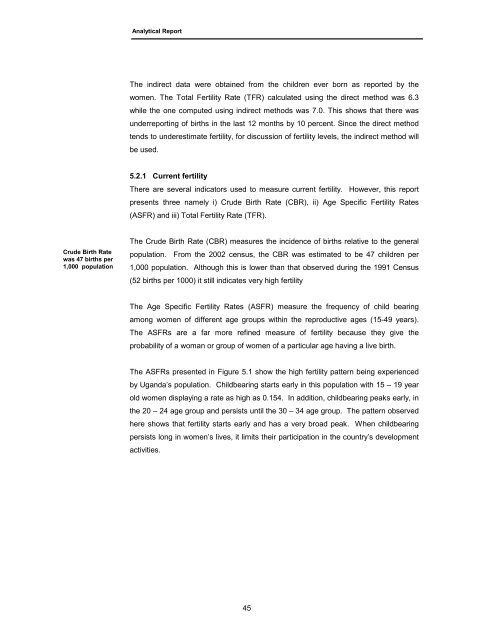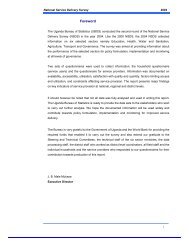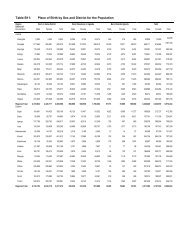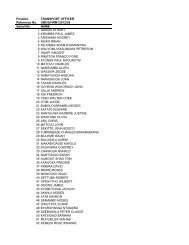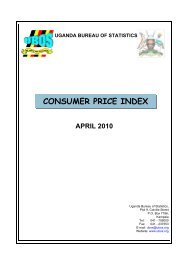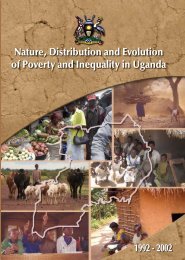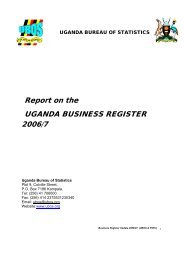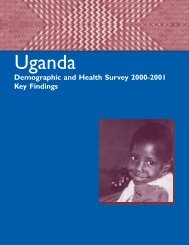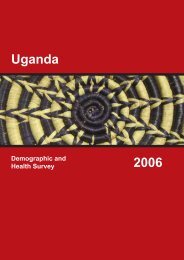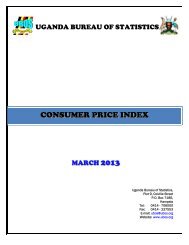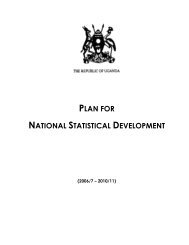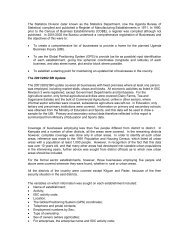Census Analytical Report - Uganda Bureau of Statistics
Census Analytical Report - Uganda Bureau of Statistics
Census Analytical Report - Uganda Bureau of Statistics
Create successful ePaper yourself
Turn your PDF publications into a flip-book with our unique Google optimized e-Paper software.
<strong>Analytical</strong> <strong>Report</strong>The indirect data were obtained from the children ever born as reported by thewomen. The Total Fertility Rate (TFR) calculated using the direct method was 6.3while the one computed using indirect methods was 7.0. This shows that there wasunderreporting <strong>of</strong> births in the last 12 months by 10 percent. Since the direct methodtends to underestimate fertility, for discussion <strong>of</strong> fertility levels, the indirect method willbe used.5.2.1 Current fertilityThere are several indicators used to measure current fertility. However, this reportpresents three namely i) Crude Birth Rate (CBR), ii) Age Specific Fertility Rates(ASFR) and iii) Total Fertility Rate (TFR).Crude Birth Ratewas 47 births per1,000 populationThe Crude Birth Rate (CBR) measures the incidence <strong>of</strong> births relative to the generalpopulation. From the 2002 census, the CBR was estimated to be 47 children per1,000 population. Although this is lower than that observed during the 1991 <strong>Census</strong>(52 births per 1000) it still indicates very high fertilityThe Age Specific Fertility Rates (ASFR) measure the frequency <strong>of</strong> child bearingamong women <strong>of</strong> different age groups within the reproductive ages (15-49 years).The ASFRs are a far more refined measure <strong>of</strong> fertility because they give theprobability <strong>of</strong> a woman or group <strong>of</strong> women <strong>of</strong> a particular age having a live birth.The ASFRs presented in Figure 5.1 show the high fertility pattern being experiencedby <strong>Uganda</strong>’s population. Childbearing starts early in this population with 15 – 19 yearold women displaying a rate as high as 0.154. In addition, childbearing peaks early, inthe 20 – 24 age group and persists until the 30 – 34 age group. The pattern observedhere shows that fertility starts early and has a very broad peak. When childbearingpersists long in women’s lives, it limits their participation in the country’s developmentactivities.45


